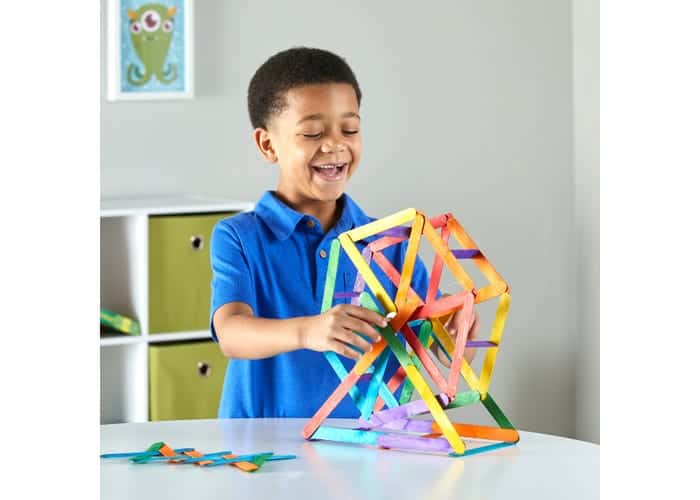Welcome to a World of Wonder: Creative Play Resources for Every Young Explorer
Hello there, amazing parents and guardians! Are you looking to spark a little extra creativity and wonder in your child’s playtime? You’ve come to the right place! Our Ultimate Guide to Creative Play Resources is here to shower you with a treasure trove of ideas, activities, and products designed to set your child’s imagination soaring into the heavens. Let’s embark on this magical journey together!
Why Creative Play is Essential for Development
Creative play isn’t just fun and games — it’s a vital component of childhood development. It helps children express their emotions, ideas, and thoughts through playful interaction. By engaging in creative play, kids develop crucial skills such as problem-solving, critical thinking, and social interaction. Let’s unlock those budding little minds and help them grow into innovative thinkers and dreamers!
Strategies for Encouraging Creative Play
Before we dive into the nitty-gritty of play resources, let’s discuss how you can lay the groundwork for creative play. It’s all about cultivating an environment that encourages curiosity and experimentation. Here are some quick tips to get you started:
- Designate a Play Space: Set up a specific area in your home where your child can be messy, loud, and unabashedly imaginative. This space should be a safe and judgment-free zone for exploration.
- Supply the Tools: Keep a variety of materials on hand, such as building blocks, art supplies, and dress-up costumes. The more diverse the options, the better!
- Limit Screen Time: While technology can be a great educational tool, it’s important to find a balance. Encourage hands-on activities that require physical manipulation and creative thought.
- Join in the Fun: Children often mirror adult behavior. By actively participating in creative activities, you not only bond with your child but also reinforce the importance of imaginative play.
Arts and Crafts Must-Haves
No creative play arsenal would be complete without the staples of arts and crafts! These materials are wonderful for fostering fine motor skills and artistic expression. Here are some must-haves for your home:
- Construction paper in various colors
- Safe, non-toxic glue and safety scissors
- Crayons, markers, and colored pencils
- Watercolor paints and brushes
- Playdough or modeling clay
- Stickers and stamps
- Recyclable materials like cardboard boxes, toilet paper rolls, and old magazines
With these essential items, the potential for creativity is endless. Whether crafting a castle from cardboard or creating a vibrant masterpiece with finger paints, the emphasis is on the process, not the product. Celebrate the act of creation and watch as confidence and skills blossom!
Building and Construction Toys
From blocks to advanced building sets, construction toys are fantastic tools for inventiveness and spatial awareness. They are not only enjoyable but also lay the groundwork for understanding basic mathematical concepts and engineering principles. Here are some types to consider:
- Classic wooden blocks
- Interlocking plastic bricks
- Magnetic tiles and shapes
- Marble runs and gear sets
- Architectural model kits
Role-Playing and Dress-Up
The make-believe world of role-playing and dress-up is a cornerstone of creative play, allowing kids to step into the shoes of different characters and work through complex social situations. This form of play is wonderful for expanding vocabulary, storytelling, and emotional awareness. To create a versatile dress-up box, include items such as:
- Hats and headpieces representing various professions
- Costumes and capes for superhero or fantasy adventures
- Play accessories like toy phones, cooking utensils, and doctor’s kits
- Thrift store treasures like old dresses, shirts, and costume jewelry
By transforming themselves into pirates, princesses, doctors, or even animals, children learn about the world through play-acting scenarios that encourage empathy and understanding. Plus, seeing your little ones come up with elaborate stories and character backstories is downright heartwarming!
Creative play resources are an invaluable part of your child’s growth and development. By offering a variety of options and ascribing value to the act of play, you’re equipping them with skills for life while having a ton of fun. Now, isn’t that what childhood should be all about? Stay tuned, as there’s plenty more to explore in the full guide, coming up next!

5 Key Considerations for Preparing Creative Play Resources
When you’re getting ready to introduce creative play resources to your child, it’s important to prepare thoughtfully. Here are five key areas to focus on to make the most of your child’s creative playtime:
- Safety First: Safety is paramount. Always choose age-appropriate, non-toxic, and child-safe resources. Check for any small parts that could pose choking hazards to younger children and ensure that any electronic items are compliant with safety standards.
- Encourage Open-Ended Play: Select toys and activities that do not have a defined outcome to foster open-ended play. This type of play allows children to use their imaginations freely and come up with their own stories, designs, or scenarios.
- Focus on Variety: Providing a variety of materials can stimulate different areas of the brain and keep play fresh and engaging. Mix traditional physical toys with arts and crafts, and don’t forget to rotate toys to reintroduce them as “new” after some time.
- Consider Storage Solutions: Having a designated storage system not only keeps your home tidier but also teaches children how to organize and care for their belongings. Use labeled bins, shelves, or drawers where kids can easily access and return their play items.
- Space for Creativity: Make sure you designate a space where kids can be free to express themselves without worry. This might mean a space for messy play, a quiet corner for reading and imagining, or a clear area for building and dancing.
Remember, the best toys and activities are those that match your child’s individual interests and developmental stage. Pay attention to what your child gravitates towards and let that guide your choices of creative play resources.
Outdoor Play for Creative Minds
Nature is one of the greatest canvases for a child’s creativity. Encouraging outdoor play not only boosts physical health but also feeds the imagination. Consider these must-have items for outdoor play:
- Gardening kits to explore plant life and nurturing
- Chalk for sidewalk art and games
- Bubbles for whimsical play
- Sand and water tables for tactile experiences
- Kites and frisbees for playful aerodynamics
Outdoor play is also the perfect opportunity for children to learn about the environment and the world around them. Encourage your child to collect leaves, sticks, or stones (where appropriate) to use in their indoor crafts and increase their awareness and appreciation of nature.
Educational Games and Puzzles
Games and puzzles are not only fun but can also provide a rich educational experience. These play resources encourage logical thinking, pattern recognition, and even teamwork. Incorporate a good mix of single and multi-player games to support both independent and social play. Here are a few suggestions:
- Jigsaw puzzles of varying complexities
- Classic board games that encourage counting and strategy
- Memory games to improve concentration and cognitive skills
- Brain teasers and riddles for older children to solve
As your child grows, their capacity for more complex games will increase. Continue to challenge them with puzzles and games that require more advanced strategic thinking and problem-solving.
Embrace the Digital Age Wisely
While it’s important to limit screen time, digital resources can also offer wonderful avenues for creativity. Educational apps, interactive e-books, and age-appropriate video games can all play a part in your child’s creative development. Here’s how to incorporate digital aids smartly:
- Select high-quality educational content that aligns with your child’s interests
- Use parent controls to ensure a safe online environment
- Set clear boundaries for screen time and stick to them
- Encourage digital creation, such as drawing, music composition, or coding, rather than passive consumption
It’s all about balance. By integrating digital resources with other forms of creative play, you provide a rounded experience that prepares your child for a future where digital literacy is crucial.
Sensory Play: A World of Textures, Sounds, and Smells
Sensory play is essential, especially for younger children, as it helps to develop nerve connections in the brain. It enables them to complete complex learning tasks and supports language development, cognitive growth, motor skills, problem-solving, and social interaction. Consider incorporating:
- Sensory bins filled with rice, beans, or water beads
- Homemade scented playdough or slime
- Musical instruments like drums, shakers, and xylophones
- Texture boards or books with varied materials to touch and feel
Sensory play can be messy, so prepare an area where your child can explore without restrictions. Your engagement and reactions can also enhance this experience, so don’t hesitate to get your hands dirty too!
With the right creative play resources and a little preparation, you’ll create an environment where your child can thrive, learn, and most importantly, enjoy every moment of their playtime adventure. Keep fostering that wonderful creativity, parents, it’s one of the greatest gifts you can give!
See more great Things to Do with Kids in New Zealand here. For more information see here
Disclaimer
The articles available via our website provide general information only and we strongly urge readers to exercise caution and conduct their own thorough research and fact-checking. The information presented should not be taken as absolute truth, and, to the maximum extent permitted by law, we will not be held liable for any inaccuracies or errors in the content. It is essential for individuals to independently verify and validate the information before making any decisions or taking any actions based on the articles.




